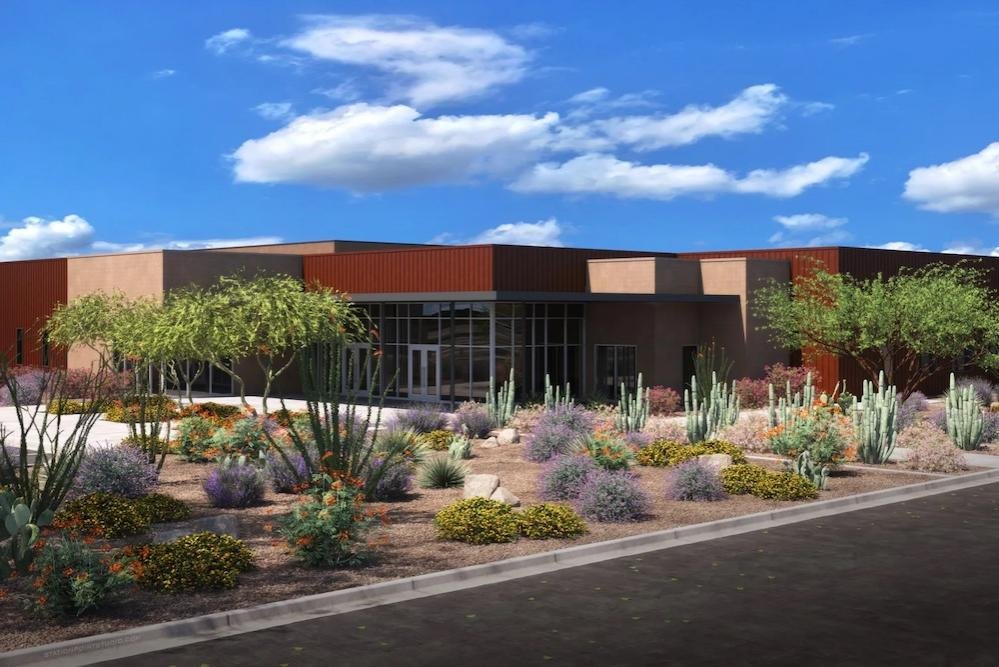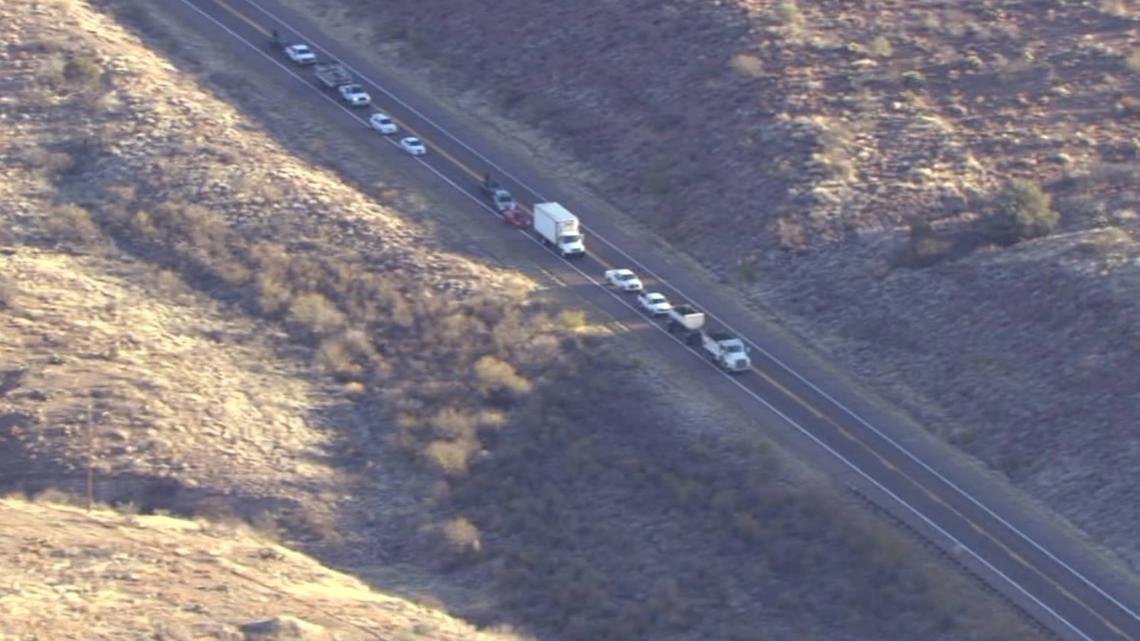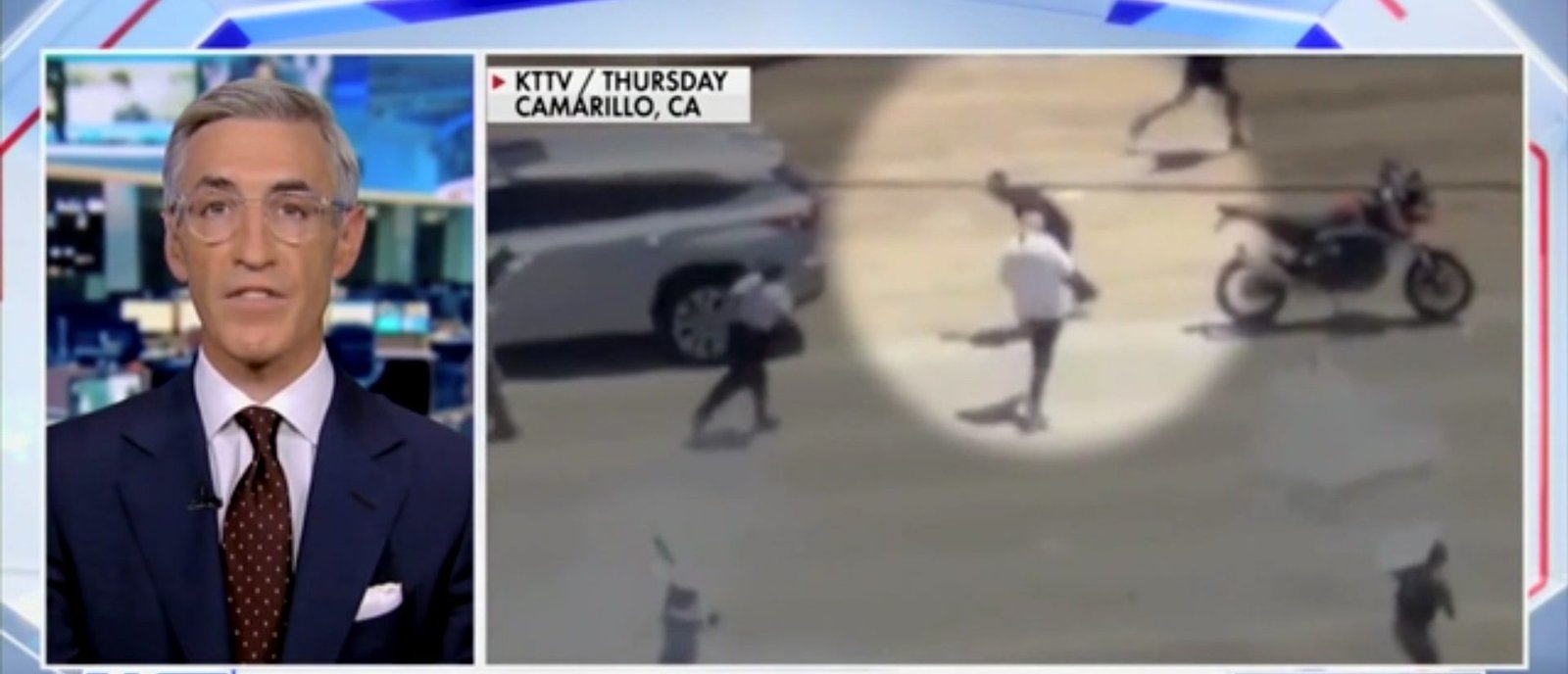Coolidge, Arizona — “You can’t even imagine,” said Geraldine Rolle, standing in the room where the mistake happened. “Really, really impossible.”
Imagine a room the size of a two-car garage with a dozen people scurrying among themselves, carrying stacks of ballot boxes and armfuls of ballots into scanners mounted on folding tables. Try it, she said. It was noisy. The machine shuffled the ballots straight and shook the table. Overnight, the small space continued to heat up to 86 degrees, then 88 degrees, Roll said. Polling stations continued to receive more ballot boxes. There was nowhere to put them and the table was covered in piles which made it difficult to keep track. Workers piled boxes in the narrow corridor outside the door.
“It was a nightmare,” said Rolle, who was then in training to be an elections director in Pinal County. “It was traumatic.”
Superintendent Jeffrey McClure said it was like trying to count the ballots “in a mine.”
Amidst the chaos, the hundreds of ballots cast by voters on Election Day were not counted. Afterwards, county officials said a lack of experienced leaders, poor ballot tracking and staff errors caused mistakes that were eventually rectified in a statewide recount.
Like many other counties in the United States, Pinal County faces high turnover of election staff, lack of clear and documented procedures, and errors. But here, more than most places, the county’s explosive growth exacerbates the problem.
Pinal County, on the southeastern edge of the Phoenix metropolitan area, is the fastest growing county in Arizona and one of the fastest growing counties in the nation, according to a Votebeat analysis of US Census data . The number of ballots passing through the election center, a two-building, 12,000-square-foot building in downtown Coolidge, has doubled since the county began holding elections there less than a decade ago. About 146,000 votes were cast in November, up from about 73,000 in the 2014 midterm elections. . However, the space and staff have remained largely unchanged.
There is not enough room to accommodate all these ballots. But soon.
A $29 million, 53,000-square-foot election center is under construction in the nearby Florence county seat, with enough room for voter registration, early voting, and Election Day activities under one roof. Space is reserved. The space for counting ballots increases from a garage-sized 416-square-foot room to more than three times as much. Workers who process early ballots are given three to four times the space he has. A tractor-trailer that carries ballots from the Post Office will allow county registrars to unload ballots directly into giant warehouses instead of sending mailers across the road.
The plan is to move in by May, before the August 2024 primary. County leaders are concerned about the delay and say they cannot imagine holding a presidential election under the current circumstances.
The electoral sector is being strengthened not only here, but throughout Arizona, one of the fastest growing states in the country. More people means more ballots, more equipment, more staff, and more space.
This summer, Maricopa County will tear down the walls of the election center in downtown Phoenix to add storage racks and create more space for counting ballots, verifying voter signatures on early ballots, and storing supplies. is starting. Meanwhile, the county is preparing to begin designing an all-new election center, which could open by 2026. Yavapai County, a high desert region north of Phoenix that includes Prescott, is also undergoing renovations for expansion while planning new spaces. future.
In the last few decades, with Maricopa County’s rapid growth, Pinal County has spread beyond its southern border into Santan Valley, Maricopa City, and other fast-growing Pinal County cities and towns. Pinal County is growing even faster than Maricopa County, nearly three times as fast, making it even more attractive these days. large employersIt’s not just retirees as it used to be. New jobs and residents are reshaping politics — independents have just outnumbered Republicans on the voter rolls, according to chronicler Dana Lewis.
It’s a sprawling county larger than Connecticut, so drive further south and miles of undeveloped land still separate many rural towns. But more and more construction is going on. The population has more than tripled since 2000 and is now 460,000, and last year alone he increased by more than 16,000.
While many government offices are located in Florence, elections are held at the old public health facility on Main Street in Coolidge. Coolidge is a small town a few dozen miles southwest on a two-lane highway. Elections moved here in 2014 after a fire broke out at the former election center in Florence, destroying most of the county’s equipment.
Despite the county’s expansion, the electoral division remains at about five people. With such a small staff and two electoral commissioners quitting in quick succession, the burden has grown. caused problems affecting voters.
In last year’s primary, the county misprinted ballots and failed to order enough ballots for polling places. The external investigator recommended improved written procedures, but also said the county needed to expand available space and staff as soon as possible.
Investigators wrote that the county didn’t have enough space to set up polling stations or store ballots and supplies. He recommended adding a few thousand more square feet to both sites, as well as a suitable loading dock accessible to heavy trucks. He also recommended a building large enough to accommodate all election-related activities, including voter registration, early voting, and preparation for Election Day.
The county’s plan accelerated in November, when more mistakes were made, in part due to confusion during tallying in cramped areas. Votebeat Investigation Finds Election Officials Documented Obvious Errors Pre-election results are certified. Virginia Ross, who was the election director at the time, received a $25,000 bonus and retired before the recount.
By March, supervisors had designed the building, secured funding for the project, and construction began. The new center is being built on the site of the old county hospital, which has since been demolished, and the old public defender’s building, which will soon be demolished to make way for a parking lot.
Conditions in the old building aren’t ideal, but Lewis is used to them.
Mr. Lewis was appointed as county registrar to replace Mr. Ross after years of involvement in elections and early voting. Her early voting processing building is just across the outdoor corridor from the Coolidge elections building. When she asked how many times she thought she’d been in November when she walked between the two buildings earlier this month, she laughed and replied, “Oh my God.” Lewis lives in high heels, she said, but not during the election.
Lewis’ team is verifying early voting signatures at a modular building the county added last year. That helped, but the recorder’s new space will be much larger, containing ten times the room voters use for early voting.
The county rolls an early ballot box into a locked cage between buildings after a voter’s signature on the box is verified. Lewis has a story of carrying cages between buildings in the rain in the middle of the night, putting them in cages and counting them.
Although the county now has a population of nearly 500,000, Pinal’s election staff remains small-town hands-on and full-on. Lewis said he likes that. But that’s a lot, even leaders admit, and it’s already changing as the county continues to grow and add staff.
Rolle, now the election director, is looking to bounce back from the county’s election woes this summer by clearly documenting proper procedures, hiring competent staff, and training them well. “Everything is from the ground and from above,” she said.
Transparency is a top priority as the county builds in the face of questions about election security and the election process.
Pinal’s electoral complex now has small windows to allow members of the public to observe tally room activity from adjacent corridors. But with ballot boxes being transported and stored, there is little room for anyone to stand and watch.
The new space features a nearly 360-degree public observatory that the county calls a “fishbowl,” with windows into three separate work spaces. In public lobbies, observers will be able to observe officials checking signatures on early ballots, removing ballots from envelopes, and counting ballots. Video cameras in the room show activity in other areas of the building.
“What’s really cool is that you can see the whole process,” said Rolle.
And safer. Ballots are not kept in the hallways on election night, but behind locked doors that are accessible only to selected officials. The observatory has access to public restrooms, so you don’t have to take your guests to safety. The complex will be gated, the parking lot will also be enclosed, and bollards will be installed around the perimeter.
Lewis said staff will feel more secure in this “wrap of security.”
The county is considering what Maricopa County is doing to protect its buildings and personnel as it considers predictions that Pinal will continue to grow and become more and more politically purple, potentially leading to further conflict. I am considering whether The blueprint shows room for additional work space within the building if needed, and the extensive county-owned lot may make this possible.
By 2050, this old farming and mining county will expected to reach 1 million people.
“How are we going to build the future?” McClure asks.
“Votebeat is a non-profit news organization that covers local election fairness and voter access. Sign up for newsletter here”
















